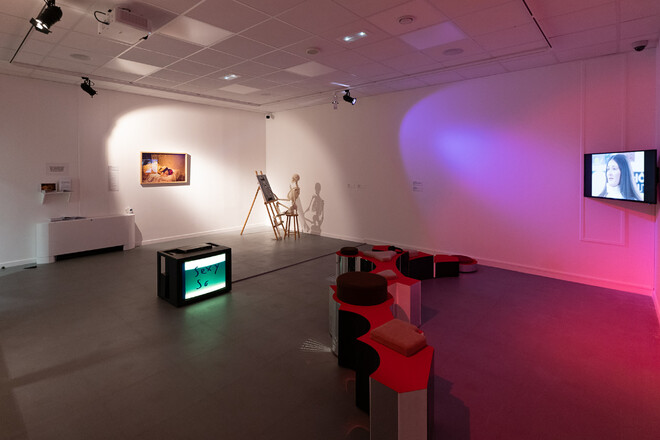ANONYME, FRED DEUX, PIERRE JOSEPH, CHARLOTTE KHOURI, PIPILOTTI RIST, ALAIN SÉCHAS
As part of the 14th edition of the "Curatorial Practices" UE led by the teams of IAC Villeurbanne and ENS de Lyon (Stéphanie Fragnon and David Gauthier).
“Et ses ténèbres craquent, et ses ténèbres durent”. Sylvia Plath's words have a particular resonance today. As the darkness we thought had dissipated re-forms, as our convictions dilute and our assurances break under the weight of threats, darkness strips us of all hope. It is thick and envelops its victims: it dispossesses. It is around and from this notion of dispossession that the works and artists on display meet. The exhibition aims to confront the visitor with a systemic dispossession of bodies, all in a deliberately brutal frontal.
“Edge”, the last line of which named the exhibition, is considered Sylvia Plath's last poem, dated February 5, 1963, six days before her death. The poet depicts a macabre scene in which a mother and her two children lie lifeless under the unblinking eye of the moon.
Lucid and despairing, the final verses echo the works on display; an impassive, disillusioned gaze seals the fates of the victims and characters depicted. The cracking sound is indeed the manifestation of the tenuous noise of suffering that we choose to ignore. Or not.
The darkness evoked appears as an ultimate horizon that refers to the loss of control, but also to a loss that cannot be seen, caught in the darkness. All the works pose the same questions: who dispossesses these bodies? Who dispossesses these bodies? And above all, to whom do they belong?
“Et ses ténèbres craquent, et ses ténèbres durent”. Sylvia Plath's words have a particular resonance today. As the darkness we thought had dissipated re-forms, as our convictions dilute and our assurances break under the weight of threats, darkness strips us of all hope. It is thick and envelops its victims: it dispossesses. It is around and from this notion of dispossession that the works and artists on display meet. The exhibition aims to confront the visitor with a systemic dispossession of bodies, all in a deliberately brutal frontal.
“Edge”, the last line of which named the exhibition, is considered Sylvia Plath's last poem, dated February 5, 1963, six days before her death. The poet depicts a macabre scene in which a mother and her two children lie lifeless under the unblinking eye of the moon.
Lucid and despairing, the final verses echo the works on display; an impassive, disillusioned gaze seals the fates of the victims and characters depicted. The cracking sound is indeed the manifestation of the tenuous noise of suffering that we choose to ignore. Or not.
The darkness evoked appears as an ultimate horizon that refers to the loss of control, but also to a loss that cannot be seen, caught in the darkness. All the works pose the same questions: who dispossesses these bodies? Who dispossesses these bodies? And above all, to whom do they belong?


